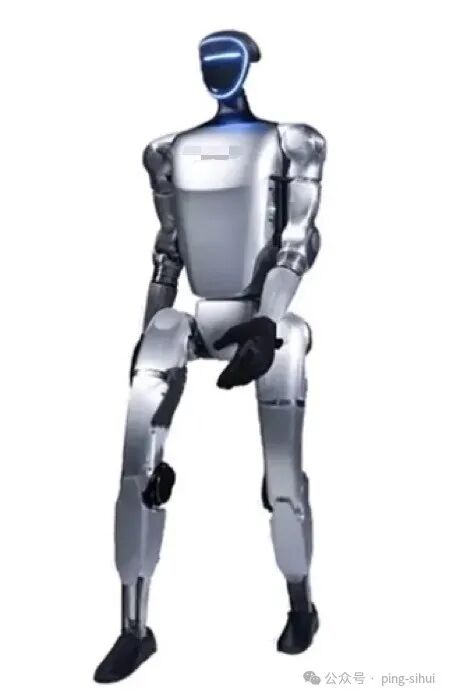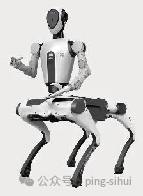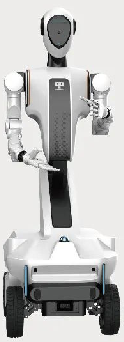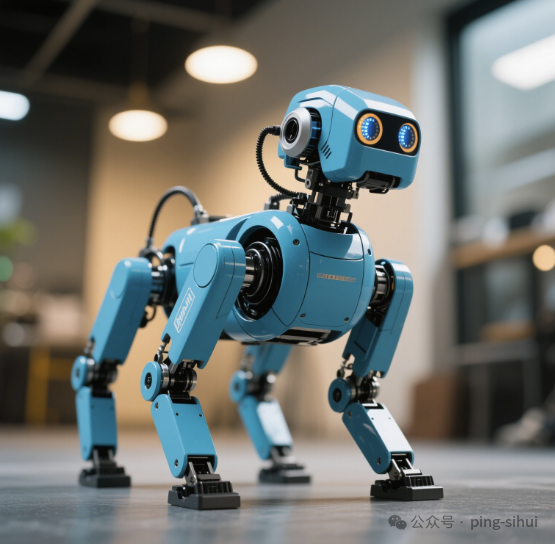Recently, the famous investor Zhu Xiaohu stated that he has withdrawn from humanoid robot projects in bulk. Zhu believes that humanoid robots are currently more for educational and performance purposes, and he does not see their commercial value. The current hype around humanoid robots is more a result of speculation, and their valuations are excessively high. Zhu Xiaohu’s remarks have doused cold water on the currently hot humanoid robot market and sparked controversy in the investment community.

I believe that it is normal for bubbles to appear in the early stages of some emerging industries, such as the internet bubble around 2000. Initial valuations were high, but many internet companies eventually went bankrupt due to a lack of clear profit models. However, the early bubble of the internet did not hinder its later significant development, so we cannot simply evaluate it based on short-term profitability.
Zhu Xiaohu views it from a commercial implementation perspective, while I look at it from the efficiency and cost perspective: Is it necessary for robots to be designed in a humanoid form?
In fact, humanoid robots are often less efficient than those with wheels or four legs; walking on two legs is less efficient than moving on four wheels. Robots with wheels or four legs are even more stable, walk more smoothly, are more efficient, and cost less. To walk upright, humanoid robots must first solve the problems of stability and self-balance, facing greater technical challenges and incurring higher costs. The stability and operational efficiency of a chassis with wheels is higher, and for crossing ditches and obstacles, a four-legged and wheeled approach can be adopted; there is no need to insist on a bipedal robot.
However, if you give a robot with a humanoid upper body a chassis with wheels (as shown below), people feel it is awkward and unrecognizable, and they have an inherent aesthetic resistance; robots only seem cool when they resemble humans. Therefore, I personally believe that humanoid robots are more about catering to human aesthetics and preferences rather than being driven by efficiency and cost considerations.

Some also argue that human bipedalism and upright walking are the results of tens of thousands of years of natural evolution. Humanoid forms are more in line with the shape of coexistence with nature, and the technical route of robots mimicking humanoid forms is not wrong. Others say that prioritizing the development of humanoid robots allows for seamless integration into real-world environments, as these environments are almost entirely designed for humans.
To clarify this issue, let us analyze several major milestones in human development: upright walking, developed brains, and dexterous hands.
The main advantages that distinguish humans from animals are the highly developed brain and dexterous hands, and upright walking has played a significant role in this process. Upright walking liberated the upper limbs of humans, which in turn promoted the development of the brain and language.
1. The liberation of the upper limbs allows hands to create tools. As the saying goes, “a clever hand makes a clever mind,” hands and brains promote each other’s development. The ability to create tools greatly enhances self-defense capabilities and allows for the cooking of meat, improving protein intake efficiency and promoting brain development. The ability to create tools is the fundamental distinction between humans and other animals.
2. With the hands freed, simple signals can be transmitted and communicated through gestures and signs, enhancing group collaboration capabilities. Group collaboration further promotes the development of language, evolving from body language and simple shouts to real language.
3. Upright walking expands the field of vision, allowing for the observation of more things, enhancing survival capabilities. The expansion of vision and the development of more complex activities after the liberation of the hands provide the brain with more diverse sensory stimuli. The brain needs to process this richer information, leading to continuous evolution and development, an increase in brain capacity, and more complex connections between neurons. Human cognitive and thinking abilities have significantly improved in this process, laying the physiological foundation for the emergence and development of human civilization.
4. After upright walking, many changes occurred in body structure, including the gradual development of vocal organs. For example, the position of the larynx gradually descended, making the human vocal tract more complex and elastic, capable of producing a wider variety of sounds, providing an important physiological basis for the emergence of language. Compared to other primates, humans can more flexibly control the movements of the vocal cords, tongue, and lips, thus producing clear and diverse syllables.
5. Knowledge transmission requires a more effective means of expression to pass survival skills and experiences to future generations. This was achieved through recording on rock surfaces, gradually forming written language and completing the transmission of knowledge.
From the above, it can be seen that certain biological characteristics of humans (upright walking) lead to certain results, such as the promotion of brain development and hand dexterity by upright walking.However, robots are not constrained by these biological characteristics, and these biological traits do not affect the intellectual development of robots. Robots can be designed in a quadrupedal or chassis with wheels form, which does not hinder the development of the robot’s brain or the dexterity of its mechanical arms and hands.Robots can completely transcend the support of biological characteristics from the natural evolutionary stage.
As for the claim that humanoid robots can seamlessly integrate into human real-life scenarios, these scenarios are designed for humans, which is also unfounded. Various human living scenarios are basically designed according to human height and must accommodate human hand operations for placing and taking. Height issues can be easily resolved, and operations like placing and taking can be achieved by equipping robots with dexterous hands. As long as the robot’s dexterous hands are sufficiently developed, combined with the robot’s perception and brain control, it can reach human levels. Therefore, the key is the robot’s ability to perceive the external environment, the level of development of various sensors, and the degree of intelligence and brain development of the robot, which determine its motion control capabilities.
The robot’s brain mainly relies on the development of AI technology and the results of big data training in different scenarios, which does not require the support of upright walking.
The robot’s mechanical arm can be designed in many ways, with degrees of freedom greatly exceeding that of the human upper arm. The joints of the robot can be very flexible; for example, the neck and waist joints can achieve 360-degree rotation, which has already surpassed humans. The end of the robot’s arm can be designed in various forms, such as claws, suction cups, and hand shapes.
The robot’s lower limbs can be equipped with four wheels or four legs, greatly enhancing stability, eliminating the need to overcome the stability and self-balance issues of upright walking, and it does not hinder various operations of the upper limbs. Four-legged and wheeled designs even have advantages in stability, efficiency, and cost; for example, in terms of walking, the stability and walking efficiency of a four-wheeled vehicle are significantly higher than that of humans. In contrast, humanoid robots must first consider their own stability and balance when working.
In terms of perception capabilities, sensors can be installed in any suitable location, and cameras can be mounted on the back or even on the top of the head. Robots can have olfactory functions (olfactory sensors) without resembling a nose; they can produce sound (speakers) without needing a mouth, and they do not need to breathe through a mouth or nose; they can sense external sounds (microphones) without resembling ears; they can feel pressure, temperature, and friction (pressure, temperature, and tactile sensors) without resembling hands. Therefore, there is no need for robots to be designed in a human shape.

However, if robots are designed to look unlike humans, even if their functions, efficiency, and costs are not inferior to humanoid robots, people still find it awkward and uncool! Since they are called robots, they should resemble humans. Four-legged or wheeled designs do not resemble humans but rather machines or tools; four legs resemble dogs rather than humans. Only by being humanoid can they meet human aesthetic standards. Humanoid robots are more about catering to a psychological need of humans: the emotional closeness of humans.

Therefore, I personally believe that humanoid robots are more driven by human emotional needs rather than rational considerations (efficiency, cost). If robots are treated as machines, humanoid forms are unnecessary.